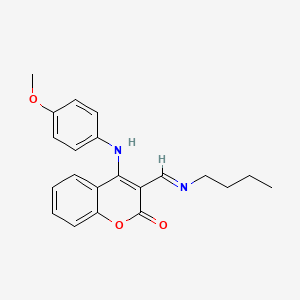|
Name: Furanyl fentanyl (N-(1-phenethylpiperidin-4-yl)-N-phenylfuran-2-carboxamide)
Type: Synthetic opioid
AKA: N/A

|
|
II. Natural Derivative
Synthetic substance, no natural derivative
 |
|
III. Chemical Profile (IUPAC name)

|
|
IV. History
Furanyl Fentanyl is a synthetic opioid developed in the 21st century. It is part of the fentanyl analog family and is studied for its effects on opioid receptors. Due to its high potency, it is of concern for its potential misuse and has been linked to overdose deaths in the opioid crisis. It represents ongoing research into synthetic opioids and their effects.

|
|
V. Legal Information
Furanyl Fentanyl is a synthetic opioid with high abuse potential. It is regulated under opioid laws to manage its misuse and prevent addiction. [Source: UNODC].
US Federal Schedule - I
Schedule I drugs, substances, or chemicals are defined as drugs with no currently accepted medical use and a high potential for abuse. Some examples of Schedule I drugs are: heroin, lysergic acid diethylamide (LSD), marijuana (cannabis), 3,4-methylenedioxymethamphetamine (ecstasy), methaqualone, and peyote.
Key US Federal Policies:
Controlled Substances Act. Public Law: Public Law 91-513 (text can be found on GovInfo) (https://www.dea.gov/drug-information/csa). Date enacted: October 27, 1970.
|
|
VI. Physical Effects
Furanyl Fentanyl is a potent synthetic opioid with strong analgesic effects. As a downer, it causes sedation, respiratory depression, and constricted pupils. Short-term use provides pain relief, while long-term use may result in addiction and respiratory issues. Overdose risks include severe respiratory depression and potential death. Safe use requires careful dosing and medical oversight. Recent research emphasizes its potency and the high risk of overdose.  |
|
VII. Psychological Effects
Furanyl fentanyl, a synthetic opioid, interacts with mu-opioid receptors, producing significant euphoria and sedation. Immediate effects include mood elevation and pain relief, lasting several hours. Long-term use may result in severe addiction, cognitive impairments, and mood disturbances. Research highlights its potency and associated risks of psychological dependence and cognitive effects.
 |
|
VIII. Culture
Furanyl fentanyl is a potent synthetic opioid, classifying it as a downer. Short-term use provides effective pain relief, while long-term use can lead to dependence, tolerance, and severe health risks. Overdose risks are extremely high, causing respiratory depression and potentially fatal outcomes. Safe dosages are not well-established, with use often restricted to controlled medical settings. Recent research underscores its high potency and significant health risks. Physical effects include drowsiness, constricted pupils, and respiratory depression.
 |
